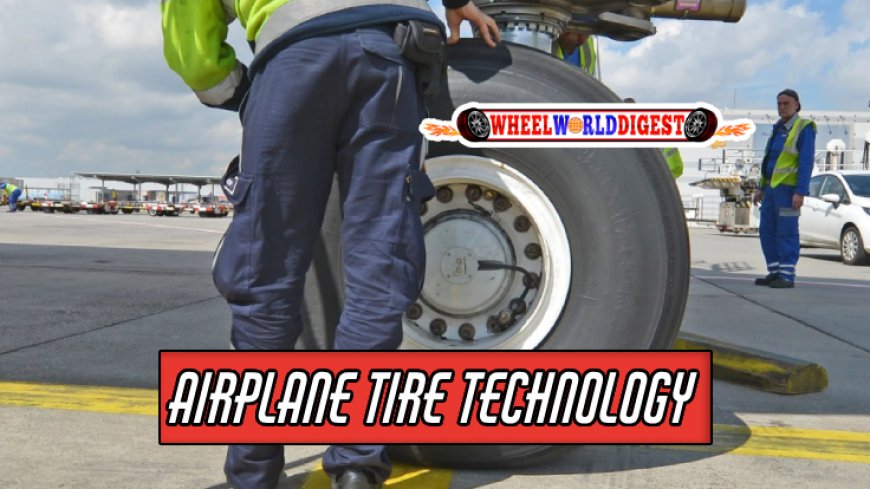High-Tech Materials in Airplane Tires
Explore the advanced materials and manufacturing methods that give airplane tires their extraordinary strength and resilience.

When we think about airplane technology, our minds often rush to complex aircraft engines and advanced avionic systems. However, there is an equally fascinating, yet overlooked component – the airplane tire. The technology and materials employed in these tires are remarkably advanced and present a testament to human ingenuity.
Unlocking the Innovations in Airplane Tire Technology
For most people, interactions with tires are limited to cars. It may then come as a surprise that airplane tires are masterpieces of engineering. They must withstand enormous stress, from takeoff and landing weights of hundreds of tons to temperature extremes between the blistering tarmac and icy altitudes.
Table of Contents
- Exploring the Materials Used in Airplane Tires
- Innovations in Airplane Tire Construction
- Maintenance and Safety: The Lifeline of Airplane Tires
- Emerging Technology in Airplane Tire Design
- Airplane Tire Technology: A Glimpse into the Future
Exploring the Materials Used in Airplane Tires

The selection of materials used in airplane tires is of utmost importance. Manufacturers need to ensure these tires can withstand intense conditions while maintaining the safety of passengers, crew, and aircraft. The primary components in these tire marvels are rubber, fabric, and steel.
Natural and Synthetic Rubber
Natural rubber plays a significant role in creating a firm, elastic base for these heavy-duty tires. It provides excellent tensile strength and heat resistance. On the other hand, synthetic rubber, composed mainly of styrene-butadiene rubber, improves the overall durability and adaptability of the tire to extreme weather conditions.
Fabric and Steel
Interwoven layers of nylon or polyester fabric are used to reinforce the rubber. This addition provides added resilience against high stress and rapid temperature changes. For added strength, most manufacturers incorporate steel cords into the tire’s casing and bead. Apart from offering remarkable tensile strength, they also ensure dimensional stability of the tire.
Innovations in Airplane Tire Construction

It’s not just the materials, but also the construction of airplane tires, that sets them apart from their vehicular counterparts. There are two primary designs used in creating airplane tires - the radial and bias-ply design.
Radial Design
In radial design, tire cord plies are arranged at 90 degrees to the direction of travel, or radially from the center of the tire. This built ensures enhanced flexibility and spreads the heat more evenly across the tire, thereby maximizing the longevity of the tire.
Bias-Ply Design
Bias-ply design, in contrast, features layers of cord plies overlaid at angles to each other. This arrangement offers superior lateral stability and absorption of landing impact forces.
While radial tires are now a common sight in commercial and private aircraft, the rugged design of bias-ply tires still makes them a favorite in many military applications.
Maintenance and Safety: The Lifeline of Airplane Tires
Given their paramount role in aircraft operation, airplane tire maintenance and safety are critical aspects of aviation. From carefully calculated tire pressures to regular inspections for signs of wear and tire retreading, there’s a lot that goes into ensuring these tires perform as expected.
- Pressure Check: Regular tire pressure checks are critical. These checks ensure that the airplane tires operate within their optimal range, thereby reducing the chances of tire failure.
- Tire Inspection: Tire inspections for wear, cuts, and punctures are part of routine aircraft maintenance. Any detected signs of issues call for immediate action – replacement or repair as deemed necessary.
- Retreading: Airplane tires are retreaded several times during their lifetime rather than being discarded at the first sign of wear. This process involves buffing away the worn-out rubber and applying a new tread layer. The retreading process promotes the tires’ longevity and is a sustainable measure in the aviation industry.
Emerging Technology in Airplane Tire Design

Innovation never sleeps in the realm of aviation. Emerging technologies are promising to revolutionize the airplane tire industry, aiming for improvements in longevity, fuel economy, and safety.
Radio Frequency Identification (RFID) is one such technology. The RFID chip, embedded into the tire, allows automated tracking of a tire’s life cycle. It provides data, including tire type, manufacture date, retreading history, pressure, and temperature readings. This digital technology allows for an enhanced monitoring and tires' precise maintenance schedule.
Another game-changer is the development of "intelligent" tires, equipped with sensors to monitor their condition continuously. Tires are evolving from passive, wear-out-and-replace components to active elements of the aircraft's safety system. These sensors provide real-time information about tire pressure, temperature, tread wear, and structural integrity, allowing for predictive maintenance.
Greener Alternatives
There’s also a push towards sustainability in the aviation industry, and it extends to airplane tires as well. Researchers are exploring greener manufacturing techniques, from the sourcing of raw materials to tire production and retreading. One example is the adoption of devulcanization technology, which allows for the recycling of old tires, thereby reducing waste and the environmental impact of the industry.
Airplane Tire Technology: A Glimpse into the Future
From resilient rubber compounds to advanced construction techniques, the technology employed in airplane tires is a fascinating blend of materials science, physics, and engineering. And with the advent of digital technology, the sector is set to scale new heights.
As we look to the future, we can expect further innovations fueled by intense competition and the quest for safety and sustainability. Innovative materials, sensor technology, and AI may soon take a more dominant role in airplane tire technology. With these advances, we can hope for safer, more efficient, and environmentally-friendly flights, changing our perspective of a seemingly ordinary component, the airplane tire.
So next time you board a plane, take a moment to ponder the marvelous engineering that comes into play. From taxiing on the runway to the roaring take-off and the subsequent smooth landing - it's not just about wings and engines; the tires too play an integral part in your safe and comfortable journey.
What's Your Reaction?









































































